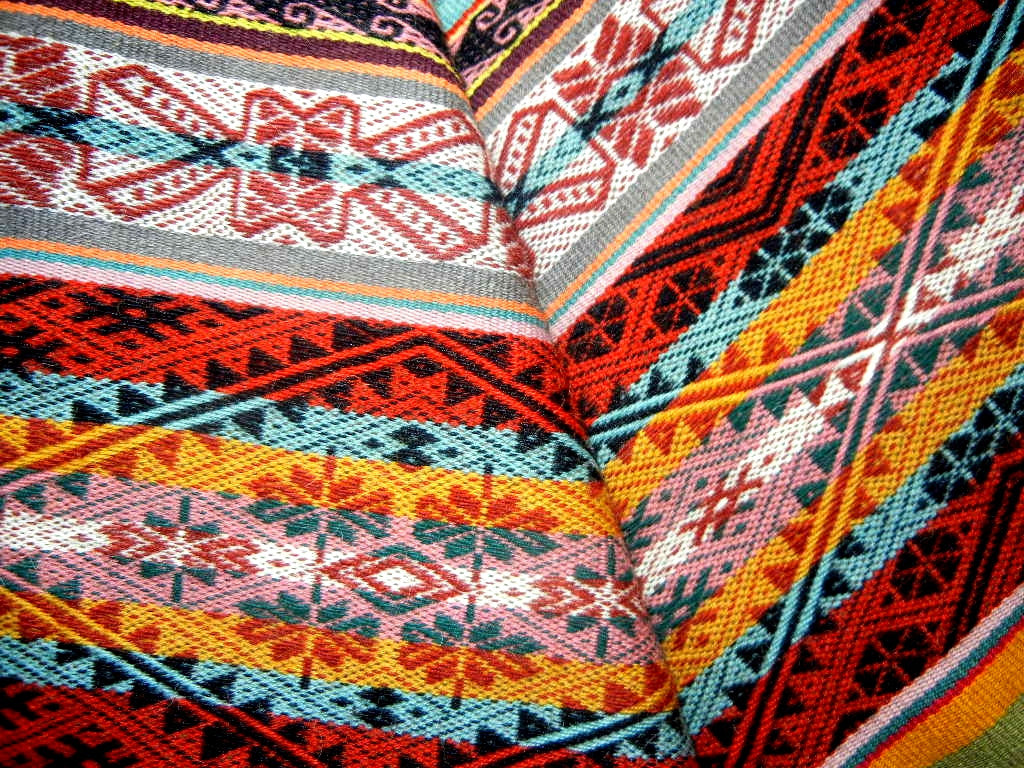
Did you know that Andean textiles tell stories? The Quechua language is an oral language – it was never traditionally written down. Communication was always expressed verbally. Without writing, you may wonder how Quechua communities recorded historical events or other observations for posterity. Well, it was through textiles!

Weavings are also capable of communicating abstract concepts. For example, the use of light and dark colours in a single pallay can represent the important Andean concept of duality: night/day, male/female, light/dark, good/evil.
Weaving was – and in many cases still is – a means for a weaver to record her thoughts and impressions about life, her community, the natural environment, and even abstract concepts. There are literally hundreds of woven designs, known as pallay, some common across the Andes and others restricted to just one or a handful of localized communities. Many are representational, depicting specific plants, animals and other natural elements or phenomena such as the sun, stars, moon and lightning, or everyday objects, like farming tools, combs or scales. Sometimes there are different pallay to represent the same thing, often from different angles; other times, different communities will weave the same design but give it different meanings.

This interesting symbol is sometimes interpreted to mean “community”, showing a representation of the division of fields among different families, or the rotating agricultural practise of sowing some fields while leaving others fallow. It can also represent the more abstract concept of ayni – the spirit of reciprocity that is such a central Andean value.
Some pallay date back to pre-Inca times while others might be very recent innovations; historical events also find their way into the woven record. This is why we see certain pallay that represent early Spaniards, ships, and historical figures and events, such as the execution of revolutionary leader, Tupac Amaru II.
Additional meaning can be encoded depending on the placement in the textile (for instance, whether it’s near the edge or in the centre), its placement in relation to other pallays, the colours used, or even which type of textile it’s used in.

Consider this textile: To the casual observer, the inclusion of stripes of bright “rainbow” colours might seem out of place, but these colours are actually the representative colours of the city of Cusco. This weaver is clearly making a statement about city life!

The types of pallay used, their placement in relation to one another and the colours employed can be very distinct from community to community, helping to identify one’s origins and promote a sense of belonging. Chinchero is a community with a very distinctive style, and easily recognizable.
Similarly, the textiles from communities like Parobamba are very distinctive – and entirely different! Interestingly, Parobamba is located on the edge of the Cusqueñan jungle – hence the use of the bright, more tropical colours, and the extensive use of pallay, perhaps representative of the abundance of vegetation and fauna.

With so much variety, it’s easy to see how these different pallay can be used like a language to create intricate patterns of meaning!
by Sarah Confer, Threads of Peru past Project Coordinator and Project Advisor.
WANT TO LEARN MORE ABOUT ANDEAN TEXTILES?
Learn more about Andean textiles symbols and patterns here!

